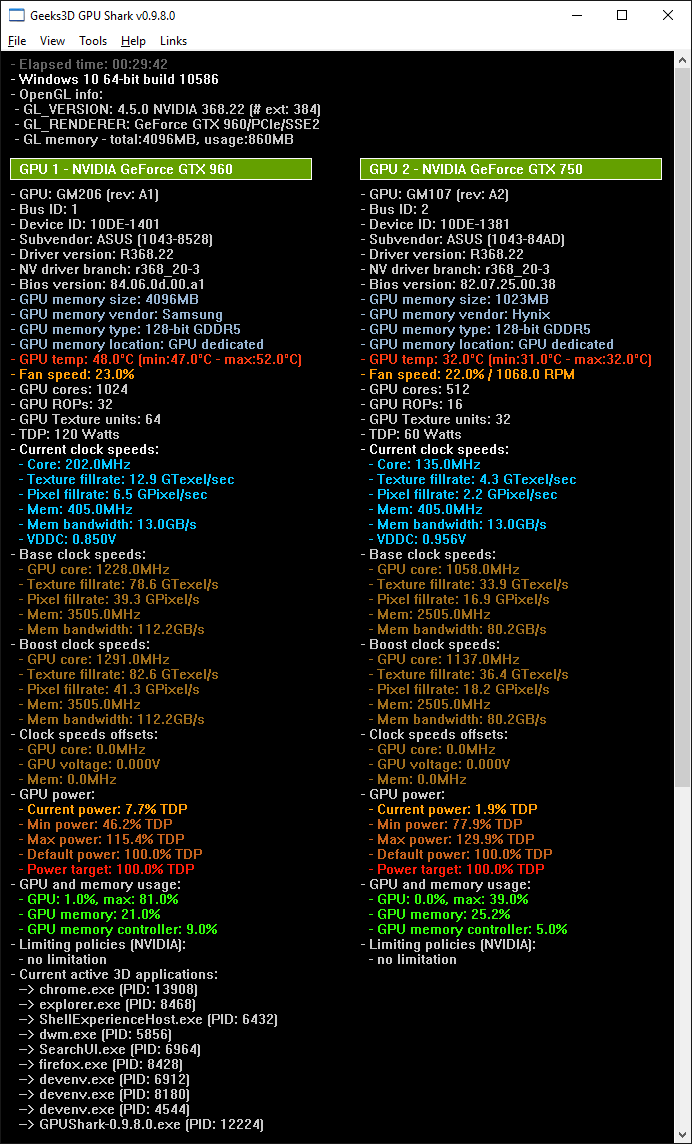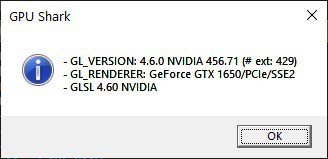

For OSX scores, a MacBook Pro with Retina display (15-inch) has been used.

#Gpu shark 64 bit windows
A tested with an Intel Core i5 3.1GHz has been used for Windows and Linux scores. Here is an overview of some scores with the first version of GpuTest.

GpuTest 0.2.0 for Windows 64-bit (XP, Vista, 7 and 8) The latest version of GpuTest can be downloaded from this page: GpuTest Downloads On Linux, a set of scripts is provided to launch the tests. On Windows and OSX, GpuTest comes with a graphical user interface (GUI) to launch the different tests. GpuTest – All tests under OSX 10.8 Mountain Lion on a MacBook Pro (15-inch Retina display) More information here: Overview of OpenGL Support on OS X. But GiMark is an OpenGL 3.3 test, so why can we launch it on OSX? Actually OSX 10.8 supports a subset of OpenGL 3.3 features and geometry instancing is among these features. The test based on TessMark requires an OpenGL 4.0 and OSX 10.8 supports only OpenGL 3.2. On OS X, only two tests are available: FurMark and GiMark. I didn’t tested it with other distributions. Regarding Linux, I developed and tested GpuTest under Linux Mint 13 64-bit. By default, GiMark renders 100’000 instances of a mesh sphere made up of 128 triangles.Īll tests can be launched on Windows and Linux. GiMark: a geometry instancing test (OpenGL 3.3).The graphic load is equivalent to the extreme tessellation level (X32) of TessMark. a tessellation test based on TessMark (OpenGL 4.0).a stress test based on FurMark (OpenGL 2.1 or 3.2):.This first version of GpuTest comes with 3 tests (other tests will be added in next versions): The current version is available in 64-bit only and I don’t know if a 32-bit version will see the light of day… GpuTest is based on OpenGL and is available for Windows (XP, Vista, 7 and 8), Linux and OS X. So if you're looking for a simple way to monitor your GPU temperature, RAM use and other details then this just might deliver what you need.GpuTest 0.2.0 is the first public version of a new cross-platform GPU stress test and benchmarking utility. Still, GPU Shark is tiny, and portable, and that convenience is more useful than flashy presentation. Some of these are coloured, but that's about the only concession here to readability. There are no neat graphics, no indicators or dials: instead you just get a few lines of text.

This information is presented in a rather basic way, and that's putting it politely. GPU Shark also displays and constantly updates information on your card's condition, though: its memory usage, GPU and PCB temperatures, performance states, clock rates, fan speed, GPU usage, and a list of all the currently active 3D applications, amongst other details. The program provides all the usual details on your hardware, for instance: graphics card model, GPU, RAM, memory size, BIOS version, installed driver, Bus and Device ID, and more. GPU Shark is a simple system information and monitoring tool which provides a detailed report on your GeForce or Radeon-based graphics card.


 0 kommentar(er)
0 kommentar(er)
